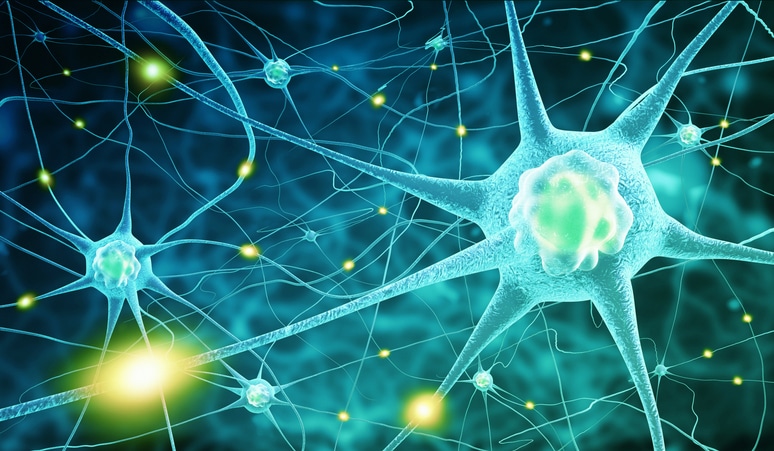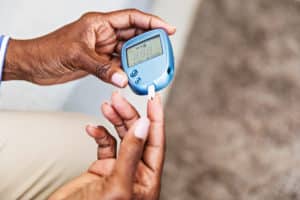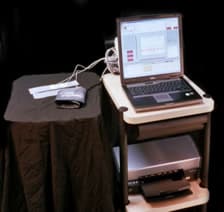
What Is Autonomic Nervous System (ANS) Monitoring?
To understand the autonomic nervous system, you need to monitor both branches, the sympathetic and parasympathetic, simultaneously, independently, and quantitatively. That’s what we do with ANS Monitoring. With this information, the goal is to balance both branches as this will improve the patient’s quality of life.
Non-Invasive Autonomic Nervous System Monitoring is a fast, pain-free, and simple measure of health. ANS will record heart rate variability, respiratory activity, and blood pressure readings. A computer then analyzes this data to determine how ANS is controlling the heart, lungs, and other body parts. The physician then interprets these computerized results.
What Is The ANS Monitoring Test?
At Park Avenue Endocrinology we use the Ansar ANX 3.0 for ANS Monitoring. This system conducts a 15 minute, 35-second clinical test designed to determine the ability of both branches of the autonomic nervous system (ANS) to respond to and relax from a challenge. As mentioned above, the two branches are the sympathetic and the parasympathetic branches.
Autonomic Nervous System Testing (ANSAR)
Involuntary actions are controlled by the Autonomic nervous system include the lungs, heart, digestive system, reflexes, blood pressure, and more. It is separated into two very distinct branches: the parasympathetic branch, which controls your blood flow, digestion, and respiration. While the sympathetic branch that controls the body when dealing with stress, illness, or injury. This branch also directs the release of hormones in the body to release

Ideally, there should be a balance between the two branches of the autonomic nervous system. Sometimes there is not. When this balance is not present, ANSAR testing can be used to detect conditions that may be occurring to disrupt the balance. Many conditions can be detected in their earliest stages when treatment is more effective. The ANSAR test is a noninvasive diagnostic test that evaluates the function of a patient’s nervous system with a set of normal results. By reviewing the results of the test, the doctor is able to customize a treatment plan for the patient.
What Does ANS Monitoring Test For?
At Park Avenue Endocrinology, we use ANS Monitoring to evaluate the autonomic nervous system as follows:
- Detects and records variations in the R-R, or beat-to-beat, interval, and respiratory activity and plots this data.
- Data undergo spectral analysis to identify high- and low-frequency components of the heartbeat interval (HBI) plot.
- Performs spectral analysis of the respiratory signal to precisely locate the parasympathetic, or high-frequency, a component of the HBI signal.
- Respiratory activity analysis provides independent and more specific measurements of sympathetic activity and parasympathetic activity at rest to determine the balance between the branches, during individual challenges to each branch, and a combined challenge to both branches to detect degrees of neuropathy or ANS branch suppression or excess.
Am I A Candidate For ANS Monitoring?
This is used with conditions including:
- Post-MI & other cardiac conditions
- Diabetes
- Hypertension
- Neurologic problems
- Syncope
- Pregnancy
- Anxiety/Stress
- Circulation problems

What Is Involved In ANS Monitoring?
There are six challenges included in these tests:
- Resting (initial) baseline measurements
- The parasympathetic challenge of deep breathing
- Return to baseline
- The sympathetic challenge of a series of short Valsalva maneuvers
- Return to baseline
- Quick postural change, going from seated position to standing, followed by quiet standing
At Park Avenue Endocrinology, we think the ANX 3.0 test is superior because it incorporates respiratory activity analysis in with heart rate variability spectral analysis methodology to measure both branches of the ANS.
What Conditions Can ANS Monitoring Help Diagnose?
ANS Monitoring can help diagnose a myriad health problems:
Neurology
- Parkinsonism & Huntington’s chorea
- Olivopontocerebellar degeneration
- Movement diseases, such as Stiff-Man syndrome
- Cerebellar degeneration, spinocerebellar, amyotrophic diseases
- Diseases of the spinal cord
- Idiopathic peripheral autonomic neuropathy
- Multiple sclerosis
- Myasthenic syndromes
- Chronic pain
- Chronic hypotension
- Neurogenic bladder

Urogenital Dysfunctions
- Sjogren’s disease
- Syncope and collapse
- Chronic fatigue syndrome
- Tachycardia
- Abnormal reflex
- Migraines/headaches
Internal Medicine
- Morbid obesity
- AIDS
- Depression or bipolar disease
- Post-traumatic stress syndrome
- ADHD
- Fibromyalgia
Cardiology
- Hypertension
- Angina
- Atherosclerosis
- Mitral valve prolapse syndrome
- Cardiomyopathy
- Cardiac dysrhythmias
- Congestive heart failure

Pulmonology
- Sleep apnea
- Asthma
- COPD
Endocrinology
- Acquired hypothyroidism
- Thyroid disorders
- Diabetes
- Menopausal symptoms
How Is An ANS Test Performed?
The patient comes to Park Avenue Endocrinology for these simple tests that take just over 15 minutes. The patient sits in an ordinary chair and three wires are attached: two onto the top of the chest and the third on the last rib of the left side. The patient is then placed in a blood pressure cuff. All wires are connected to the Ansar ANX 3.0 system.
First, the patient is told to remain still and as quiet as possible and to breathe freely at his or her own pace. This lasts about five minutes.
Next, the patient is asked to perform deep breathing of about five seconds per inhale and exhale. Next comes the Valsalva maneuver, where the patient is told to take a quick breath, hold it, and build pressure in the chest by pushing out the stomach. This section lasts about five minutes.
Next, is the standing challenge. Here, the patient is asked to stand quickly and remain standing for the final five minutes. This transition may be repeated from sitting to standing. If the patient cannot stand, they lie for the first part and sit up for the final section.
That ends the ANS Monitoring test, and the results are then generated and read.
How Long Does An ANS Monitoring Test Take?
The entire test takes just over 15 minutes.
What Can I Expect From The Results Of An ANS Test?
The results are broken down into four parts: baseline (regular breathing), deep breathing, Valsalva, and standing. Each of the sections has heart rate and blood pressure information in normal, low, and high ratings.
Contact Us Today!
If you have any questions or comments, or if you want to learn more about the services we provide, please call us at 212-772-7628 . For a consultation, or to setup an appointment click here.


